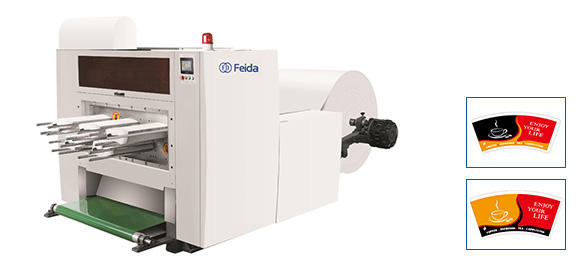Paper Plate Machines: The Core of Modern Packaging Technology
In today's rapidly growing packaging industry, paper plate machines have become essential manufacturing equipment for producing various paper containers. From eco-friendly disposable tableware to premium gift packaging, these machines create sustainable solutions that are increasingly replacing plastic packaging due to their environmental benefits, customizability, and cost efficiency.
1. Basic Concepts & Working Principles
1.1 Definition of Paper Plate Machines
A paper plate machine is an automated device designed to transform pulp or pre-made paperboard into containers such as plates, bowls, and boxes. These machines serve diverse industries, including food packaging, electronics, and cosmetics.
1.2 How Paper Plate Machines Work
Modern paper plate machines follow a precise production process:
1. Feeding System – Pulp (for wet molding) or pre-cut paperboard (for dry molding) is loaded into the machine.
2. Molding Stage – The material is shaped using pressure, vacuum suction, or heat.
3. Drying Process – Wet-molded products undergo drying (hot air, infrared, or microwave).
4. Smoothing & Shaping – Surface finishing enhances smoothness and durability.
5. Edge Trimming – Excess material is removed for clean edges.
6. Quality Control & Packaging – Automated inspection ensures only defect-free products are packaged.
1.3 Types of Paper Plate Machines
Wet Process Machines
Use liquid pulp for molding
Ideal for thick products (e.g., egg trays, fruit cartons)
Uniform wall thickness
Dry Process Machine
Use pre-made paperboard
Produce high-precision items (e.g., cosmetic boxes, food containers)
Superior surface finish
2. Key Technical Features
2.1 Precision Mold System
High surface smoothness (Ra ≤ 0.8μm)
Non-stick coatings (e.g., Teflon) for durability
Quick mold change (15-30 minutes)
Temperature control (±1°C accuracy)
2.2 Automated Control Systems
PLC & HMI integration for full automation
Stored production parameters (100+ recipes)
Real-time fault detection & remote monitoring
2.3 Energy Efficiency & Eco-Friendly Design
Heat recovery systems (20-30% energy savings)
Water recycling (95% reuse in wet processes)
Noise reduction(<75 dB)
Waste minimization with instant recycling
3. Applications of Paper Plate Machines
3.1 Food Packaging
Disposable tableware (plates, bowls, cups)
Food containers (cake boxes, pizza trays)
Liquid-resistant beverage cups
3.2 Electronics Packaging
Cushioning inserts (replacing foam)
Premium gift boxes (phones, tablets)
3.3 Medical & Hygiene
Sterile medical trays
Pharmaceutical packaging
3.4 Industrial Packaging
Custom protective packaging
Agricultural trays (egg cartons, fruit holders)
4. How to Choose a Paper Plate Machine
4.1 Production Capacity
Small-scale: 1,000–5,000 pcs/hour
Mid-range: 5,000–15,000 pcs/hour
Industrial: 15,000–30,000+ pcs/hour
4.2 Product Specifications
Diameter (50mm–400mm+)
Depth (shallow <50mm, deep >50mm)
Complexity (shapes, flanges, ribs)
4.3 Automation Level
Semi-automatic (low cost, manual labor)
Fully automatic (standard)
Smart machines (AI quality control)
4.4 Space & Energy Needs
Power: 20kW–300kW
Compressed air requirements
Floor space: 50m²–200m²
5. Market Trends & Future Outlook
5.1 Eco-Material Compatibility
Biodegradable materials (PLA, PBAT)
Recycled fiber optimization
PFAS-free oil resistance
5.2 Smart Manufacturing
AI-powered defect detection
Digital twin simulations
Predictive maintenance
5.3 Multi-Function Integration
In-line printing & molding
Post-processing (lamination, embossing)
Flexible production switching
5.4 Energy-Saving Innovations
IR drying & heat pump systems
Servo motor efficiency
Advanced heat recovery
6. Operation & Maintenance Guide
6.1 Safety Protocols
Wear protective gear (heat-resistant gloves)
Pre-operation checks (safety guards, molds)
Avoid overloading
6.2 Routine Maintenance
Daily cleaning (molds, conveyors)
Scheduled lubrication
Inspect wear-prone parts (seals, cutting blades)
6.3 Troubleshooting
Poor molding: Check temperature/pressure
Unusual noises: Inspect drive systems
Electrical faults: Professional repair only
Conclusion: The Future of Paper Plate Machines
With global plastic bans and rising eco-awareness, paper packaging demand will keep growing. Paper plate machines will evolve with:
AI & IoT integration for smart factories
New sustainable materials processing
Higher energy efficiency
 Español
Español Français
Français China
China



